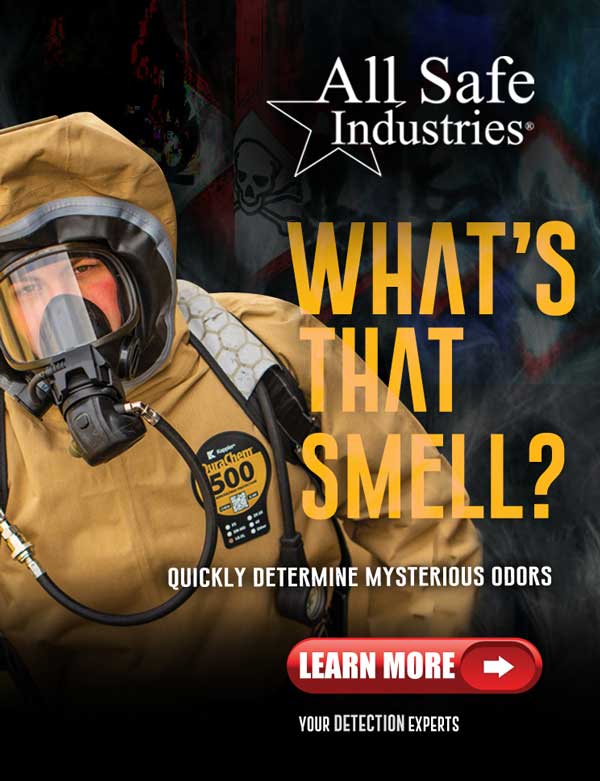By Ron Holcomb
Editor’s Note: Author Ron Holcomb is sharing a chapter from his recently released book Constant Chaos. We’ll feature other chapters in the coming months. Click here for more information on how to get his book.
PART VIII Meth to Marijuana
Chapter 32 — Annie
In the meth-making world, “Annie” is slang for anhydrous ammonia, also known by its chemical formula NH3. By whatever name it is called, this chemical is corrosive, toxic and highly dangerous to humans. Anhydrous means without water so the chemical has a strong attraction to water.
If released in the air near people, the corrosive gas aggressively seeks out and burns high moisture areas of the body including the eyes, nose, throat and lungs. Large or sustained exposure to the gas can be fatal. NH3 is not household ammonia, which is a diluted water solution containing 5% to 10% ammonia.
At room temperature, anhydrous ammonia is a colorless gas with a distinctly pungent and suffocating odor. Because it changes from a liquid to gas at minus 28 degrees Fahrenheit, it is compressed into a liquid and stored in specially designed pressurized cylinders. One of the main uses of anhydrous ammonia is as a fertilizer due to its high nitrogen content. It is also used in commercial refrigeration systems.
Anhydrous ammonia is a key ingredient needed to produce meth using the Nazi method. This method became popular in Washington (as described in Chapter 31) because meth cooks no longer needed to have a chemistry background or specialized lab equipment. Thanks to recipes posted on the internet, making meth became so easy and fast that all varieties of meth users started to make it.
Ammonia Thefts Common
Meth cooks were able to surreptitiously obtain anhydrous ammonia from a variety of places. Large mobile agricultural tanks sitting in farm fields, fishing boat refrigeration systems and even rail tank cars were the targets of thefts where liquid ammonia was drained into smaller tanks.
In May 2002, thieves broke into a food processing facility in Arlington in Snohomish County and connected a garden hose to a valve with duct tape on a 3,000-gallon NH3 tank. Some 1,000 gallons of the corrosive and toxic gas leaked into the air and authorities had to close all highways into the city and evacuate about 1,500 residents. Nighttime break-ins and thefts of NH3 cylinders were also common at commercial gas businesses.
For a time, anhydrous ammonia in 150-pound commercial cylinders was bought from chemical suppliers under false pretenses. Some enterprising criminals specialized in supplying Annie to scores of meth cooks because it was the ingredient hardest to obtain.
The arrival of anhydrous ammonia at meth labs brought a whole new set of risks and dangers to law enforcement, ecology spill responders and the public. The immediate challenge we faced was dealing with containers not designed to store corrosive and toxic gas. The most common ones we found were 5-gallon propane tanks, the kind used for home barbecue grills. These tanks were not designed to hold NH3 because the gas corroded their brass valves and pressure-relief mechanisms.
No Established Procedure
We had no established procedure to evaluate a propane cylinder containing anhydrous ammonia when they first started showing up at these Nazi method meth labs. We had to pioneer our own methods and procedures to deal with them. There were a couple of techniques we learned that could help us quickly distinguish between a modified propane tank holding NH3 and a tank with propane. The most obvious was whether the valve had a distinctive blue residue from the gas reacting with the brass valve.
The most conclusive technique, however, involved releasing a small amount of the gas and testing it with a pH test strip. Of course, this procedure had to be conducted while we were wearing a chemical suit with a respirator or an air tank. Propane is neutral on the acid/base scale, so it appeared as 7 on the test strip’s 0-14 pH scale. Anhydrous ammonia is a strong base, and it immediately colored the test strip at the upper end showing 12 to 14 on the pH scale.
If a tank contained NH3, we had to figure out how much it held to determine how we would deal with it. Fortunately, every propane cylinder had a tare weight stamped on it at the factory. The tare weight is the weight of the cylinder when it is empty.
The weight of NH3 is 5.7 pounds per gallon so by subtracting the tare weight from the total weight of the tank we could figure out the amount of anhydrous ammonia it held. That was important to know for several reasons, including the risk to us and anyone else in the immediate area if the valve or pressure relief mechanism suddenly failed.
If there was just a small amount of NH3 left inside, we typically released it into the air. If there was more than a small amount, our procedure in the early days was to send the gas through a rubber hose into a container of water. This technique, called sparging, ended the threat of an air release of the corrosive and toxic gas and created liquid ammonium hydroxide.
The corrosive liquid posed less of a threat than the gas and was much easier to manage and dispose of. Unfortunately, as soon as anhydrous ammonia turned from liquid to gas it cooled in a process called “auto-refrigeration” and slowed the transfer rate of the gas. At night or in cold weather this process took hours to complete.
An unusual situation in January 1997 at the former Puget Sound Hospital in Pierce County was an example of the challenge we faced when sparging NH3 into water. We were called there by police late at night after a man and a woman were apparently having a psychotic meth episode and had been pounding on the locked front door entrance. Witnesses said they got frustrated and then threw a bunch of containers out of their car, including two propane tanks, and drove off.
When Brett Manning and I arrived, ammonia gas was leaking from the valve on one of the small tanks. We hooked up a hose to the valve and sparged the gas into a 5-gallon container of water. Ice formed on the outside of the tank, greatly slowing down the release of anhydrous ammonia into the water. We had to melt the ice and warm the tank up to keep the gas flowing. It took several long and frustrating hours to empty the tank.
About the Author

Ron Holcomb worked as a spill responder for the Washington State Department of Ecology before retiring in 2020 after a 40-year public service career dedicated to protecting the environment. He was the Spill Team Lead for Ecology’s Southwest Region and personally handled more than 6,000 oil and hazardous material spill incidents. Prior to being a spill responder, he was a public information officer for Ecology and the Wisconsin Department of Natural Resources. He received a Master of Science in Environmental Communications from the University of Wisconsin after graduating with a degree in Journalism, Biology and Natural Resources from Humboldt State University in Arcata, Calif. He developed his love of the outdoors and concern for the environment during childhood experiences in national parks and forests, and as a member of The Mountaineers. In retirement he still enjoys climbing peaks in the Olympic and Cascade Mountains.



